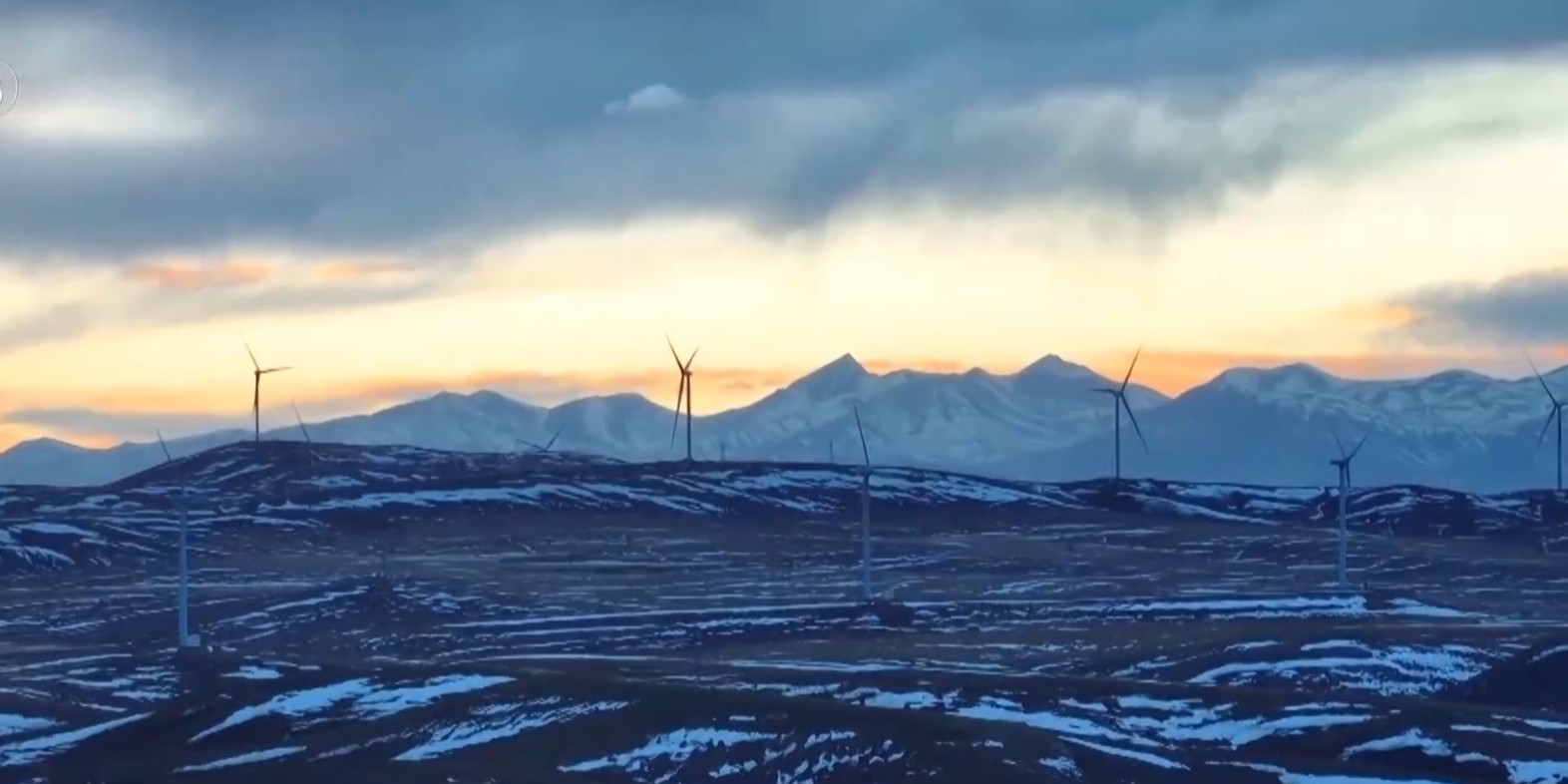
The world’s largest ultra-high-altitude wind farm came online on January 1 in Tibet, or what China now refers to as the Xizang Autonomous Region.
The 100-megawatt (MW) wind farm is at an altitude of 4,650 meters (15,256 feet) in the Seni District. A wind farm built at 3,500 (11,483 feet) to 5,500 feet (18,045 feet) is considered ultra-high.
Its developer, CHN Energy, will use the wind farm for R&D to further develop large-scale ultra-high-altitude wind farms. But in the meantime, this wind farm is providing clean electricity to 140,000 households in Nagqu City, the largest of Tibet’s prefecture-level cities.
This wind farm’s turbines must be resilient in Tibet’s harsh weather conditions – extreme sun, wind, sand, rain, and snow – and be able to withstand drastic temperature changes.
Hu Jiansheng, head of the project, told China Media Group that a smart wind power platform was used to design the wind farm. He said, “With stability control technology, we have overcome the problems caused by the ultra-high altitude, including the low efficiency of wind energy conversion and the deceleration of wind turbines’ blades.”
The turbines’ blades are longer to increase the swept area and thus improve efficiency in low atmospheric pressure. Hu also said that the developers “invented a special technique to spray the outer layer of the paint to effectively prevent it from turning too dry and crispy, mitigating the aging of other exposed parts of the wind turbines.”
The $90.3 million wind farm was built in around 260 days despite the harsh conditions. Its 25 turbines, spread over 140,000 square meters (1.5. million square feet), are expected to provide about 200 million kWh of electricity annually, reducing carbon dioxide emissions by about 160,000 tonnes.
Top comment by Dafty
This is actually really interesting. The air pressure at such altitudes is so low that it takes a lot larger turbine to get the same amount of power compared to one at sea level. I'm impressed they were able to tackle this problem successfully.
The flip side being the insane energy potential from tidal, as water is so much more dense. But that comes with it's own set of headaches.
Read more: China’s Goldwind installed a 16 MW offshore wind turbine in just 24 hours
Photo: China Media Group
To limit power outages and make your home more resilient, consider going solar with a battery storage system. In order to find a trusted, reliable solar installer near you that offers competitive pricing, check out EnergySage, a free service that makes it easy for you to go solar. They have hundreds of pre-vetted solar installers competing for your business, ensuring you get high quality solutions and save 20-30% compared to going it alone. Plus, it’s free to use and you won’t get sales calls until you select an installer and you share your phone number with them.
Your personalized solar quotes are easy to compare online and you’ll get access to unbiased Energy Advisers to help you every step of the way. Get started here. – ad*
FTC: We use income earning auto affiliate links. More.





Comments